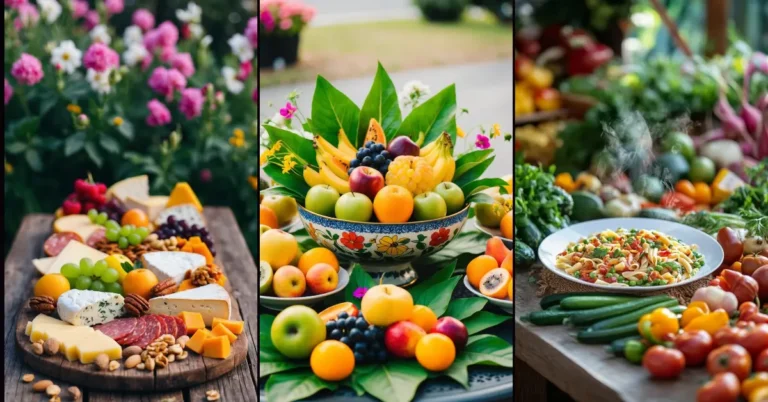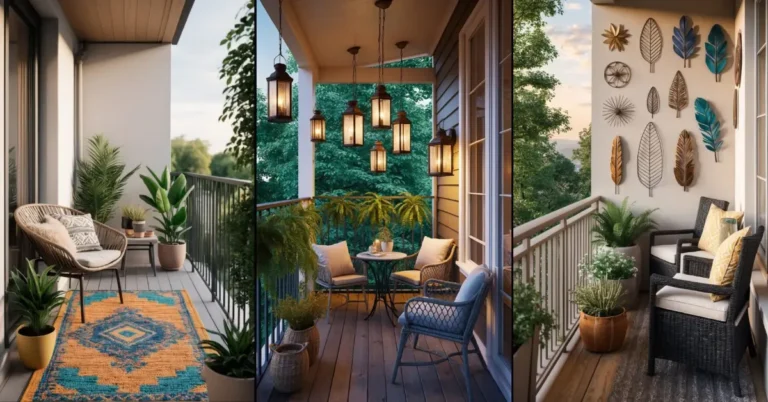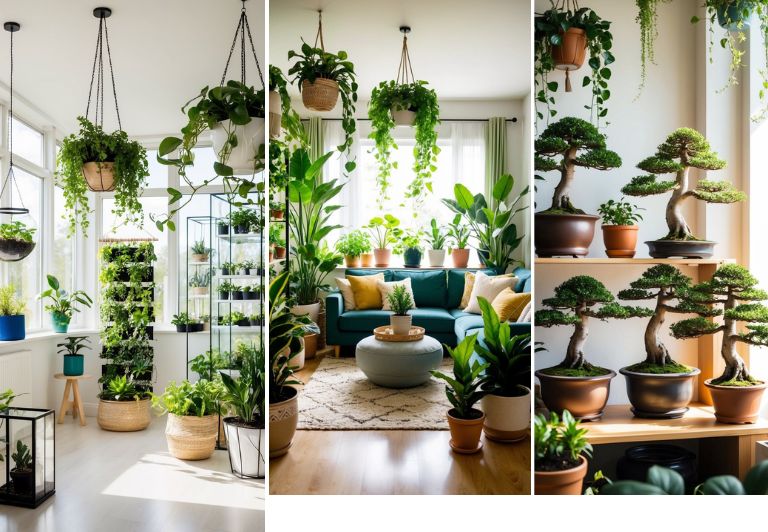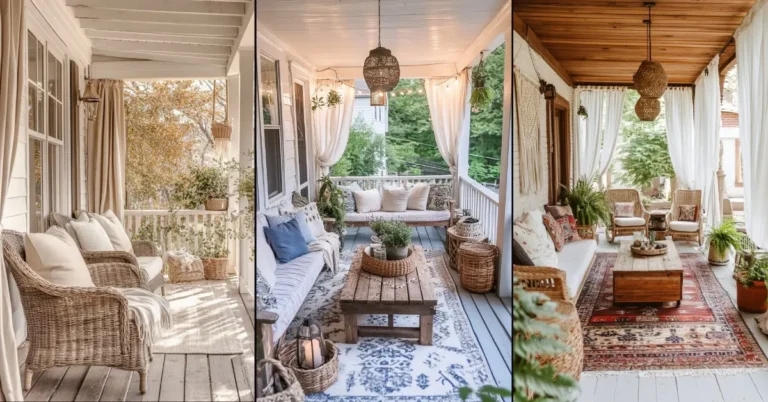10 Decorative Garden Ideas: To Enhance Outdoor
Gardens are a chance to bring a bit of style and function to your outdoor space. The right touches can turn a plain patch of green into something that genuinely feels like home.
Decorative ideas can help make your garden feel balanced and inviting.
Whether you’re all about subtle accents or want something bold, there’s a way to add a little artistry and improve how you use the space.
1) Build an Arched Trellis to add vertical interest
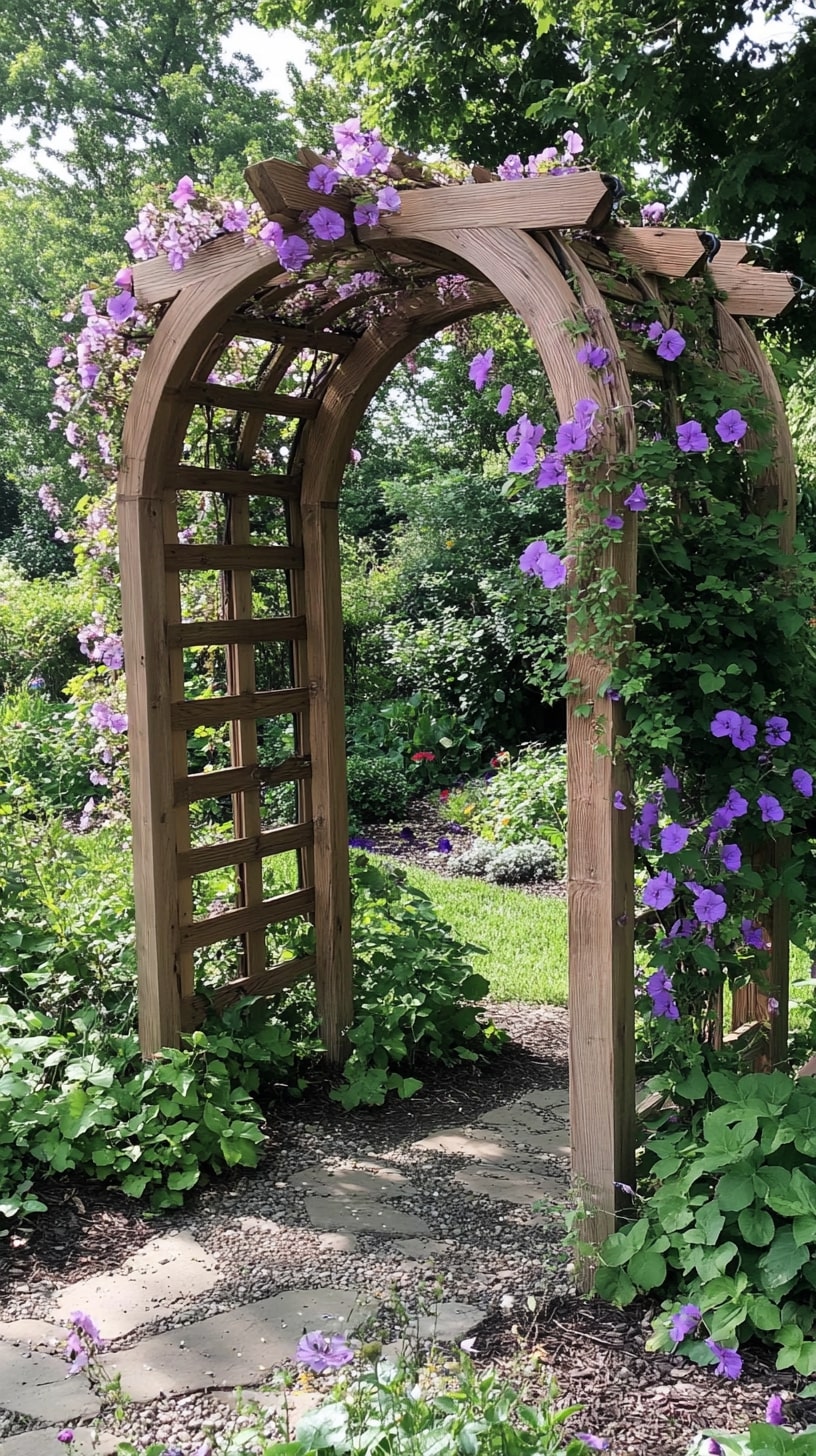
An arched trellis brings some height and structure to your garden, adding visual depth. It can become a focal point or even divide different areas naturally.
Try building one from metal cattle panels for a sturdy, clean look. Trellises like these are great for climbing plants and make a striking vertical display. If you’re curious, check out more garden arch trellis options.
2) Install Elegant String Lights for ambient evening lighting
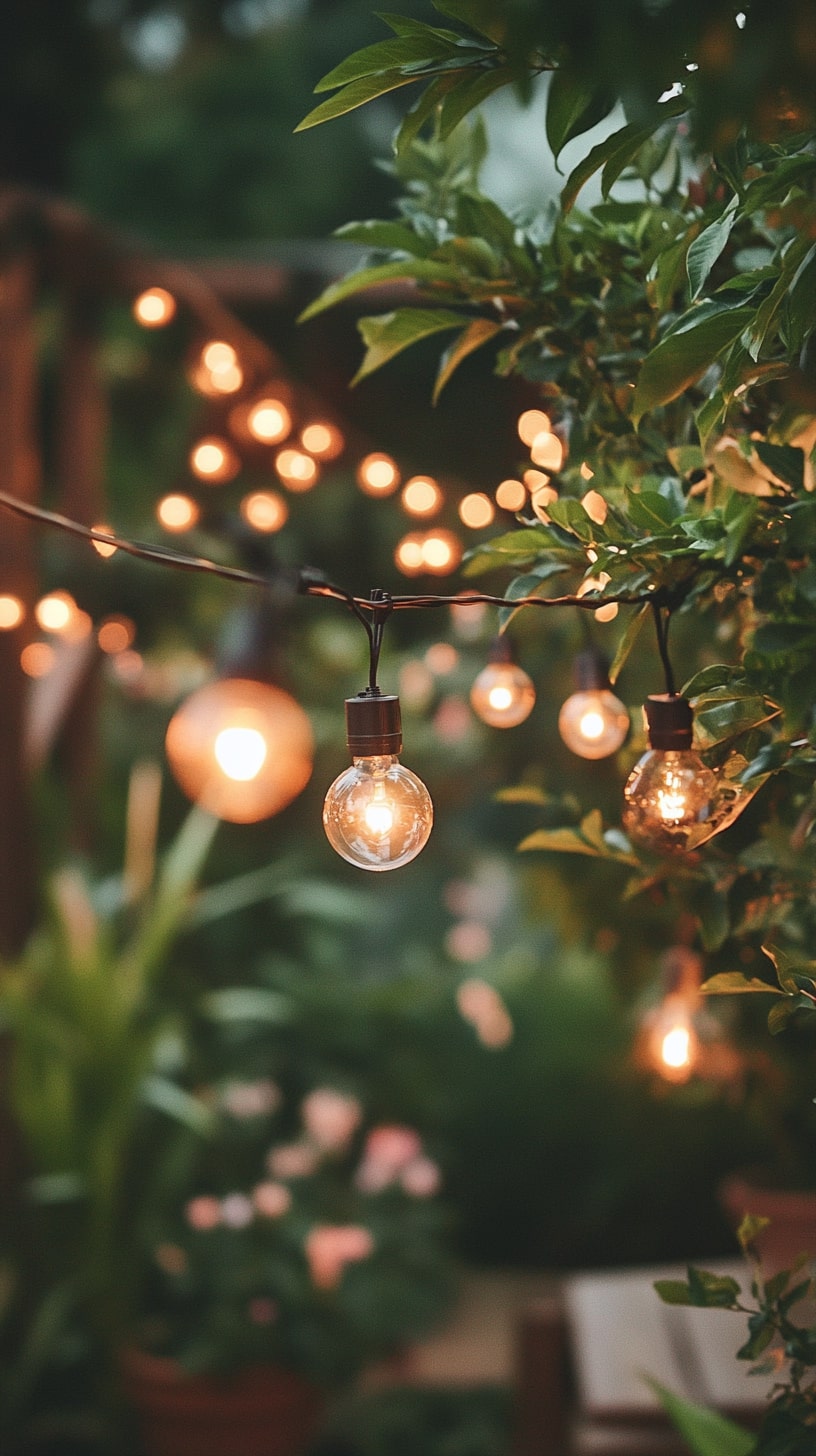
String lights give your garden a cozy, inviting vibe after sunset. Drape them over pergolas, fences, or even tree branches to add a bit of magic.
Warm white bulbs tend to look the most elegant and don’t overpower the space. Placement matters—try to highlight your favorite features. You’ll find lots of creative outdoor string light ideas for boosting both mood and function.
3) Use Terra-Cotta Pots for rustic container gardening
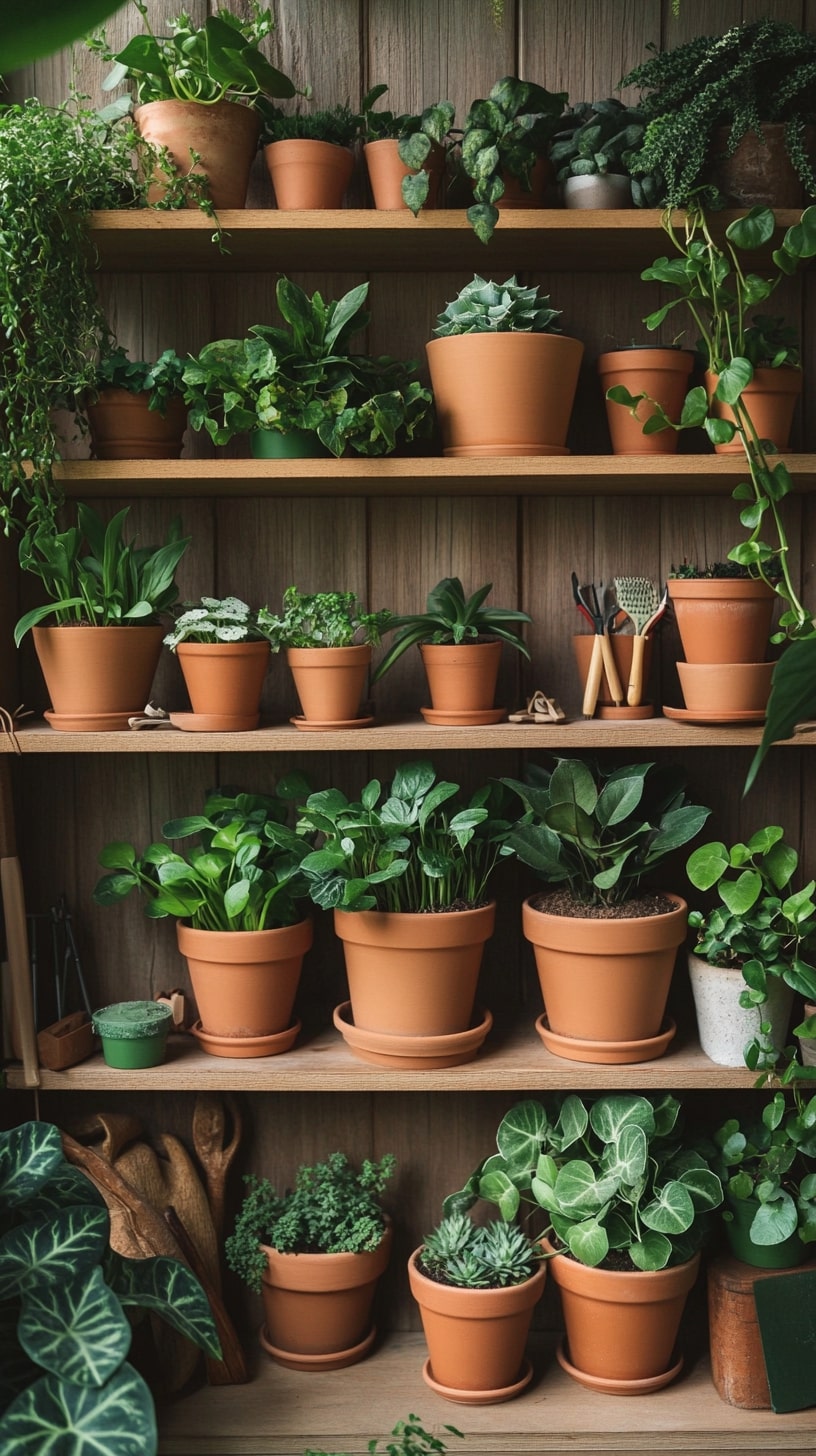
Terra-cotta pots just have that classic, earthy look that works in almost any garden. The porous clay lets roots breathe and keeps plants healthier.
Arrange them in groups or stack them at different heights for extra interest. They add a bit of old-school charm and texture—honestly, you can’t go wrong. Need inspiration? Pinterest terra cotta pots is a rabbit hole worth falling into.
4) Create a Wheelbarrow Garden as a charming planter
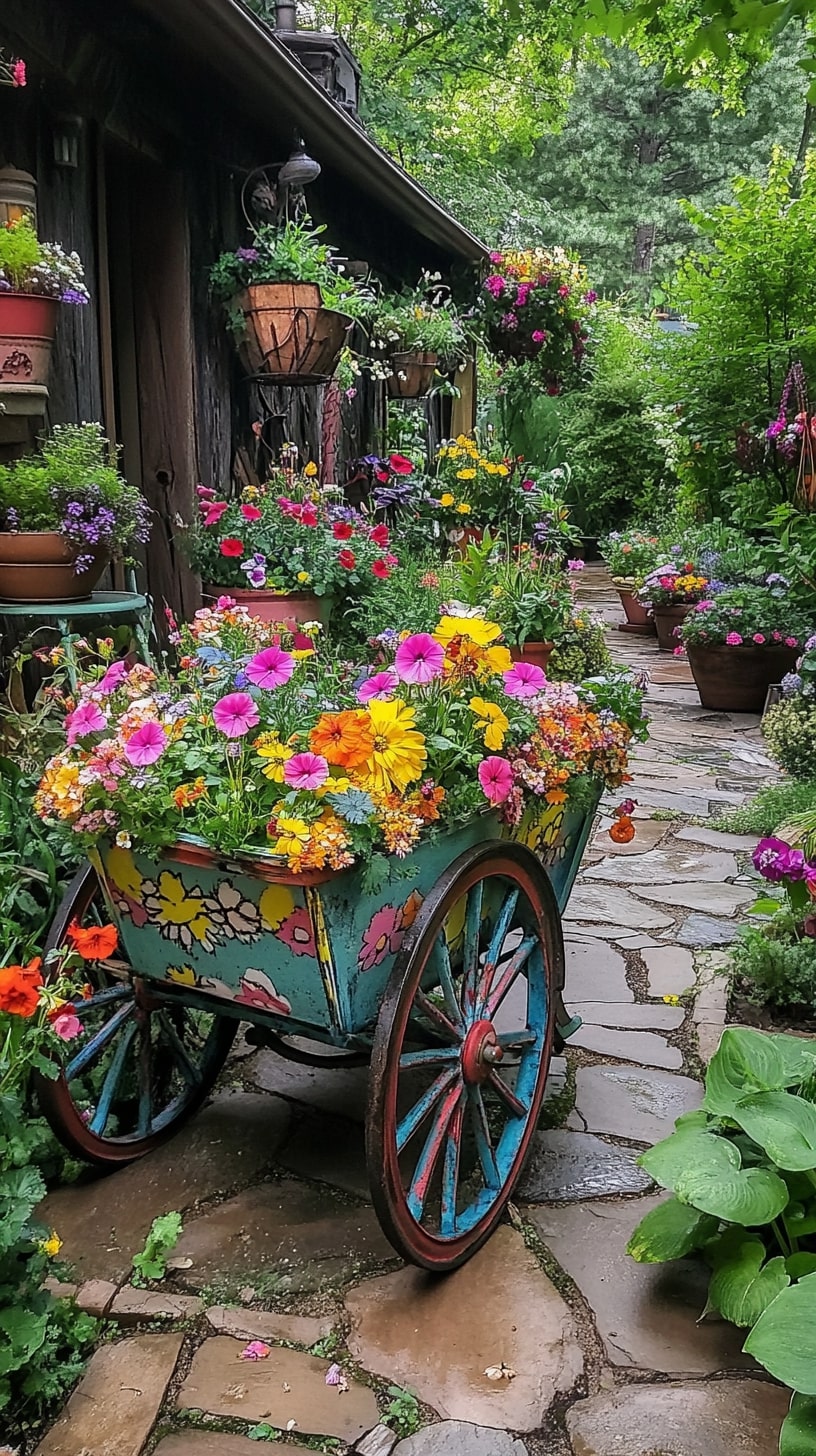
A wheelbarrow planter brings a dose of rustic charm and is surprisingly practical. Fill one up with whatever you like—flowers, herbs, or even succulents.
Metal or wooden wheelbarrows both work, and you can move them around as your garden evolves. There are some clever wheelbarrow planter ideas out there if you want to mix vintage vibes with gardening.
5) Add Beautiful Bird Baths to attract wildlife
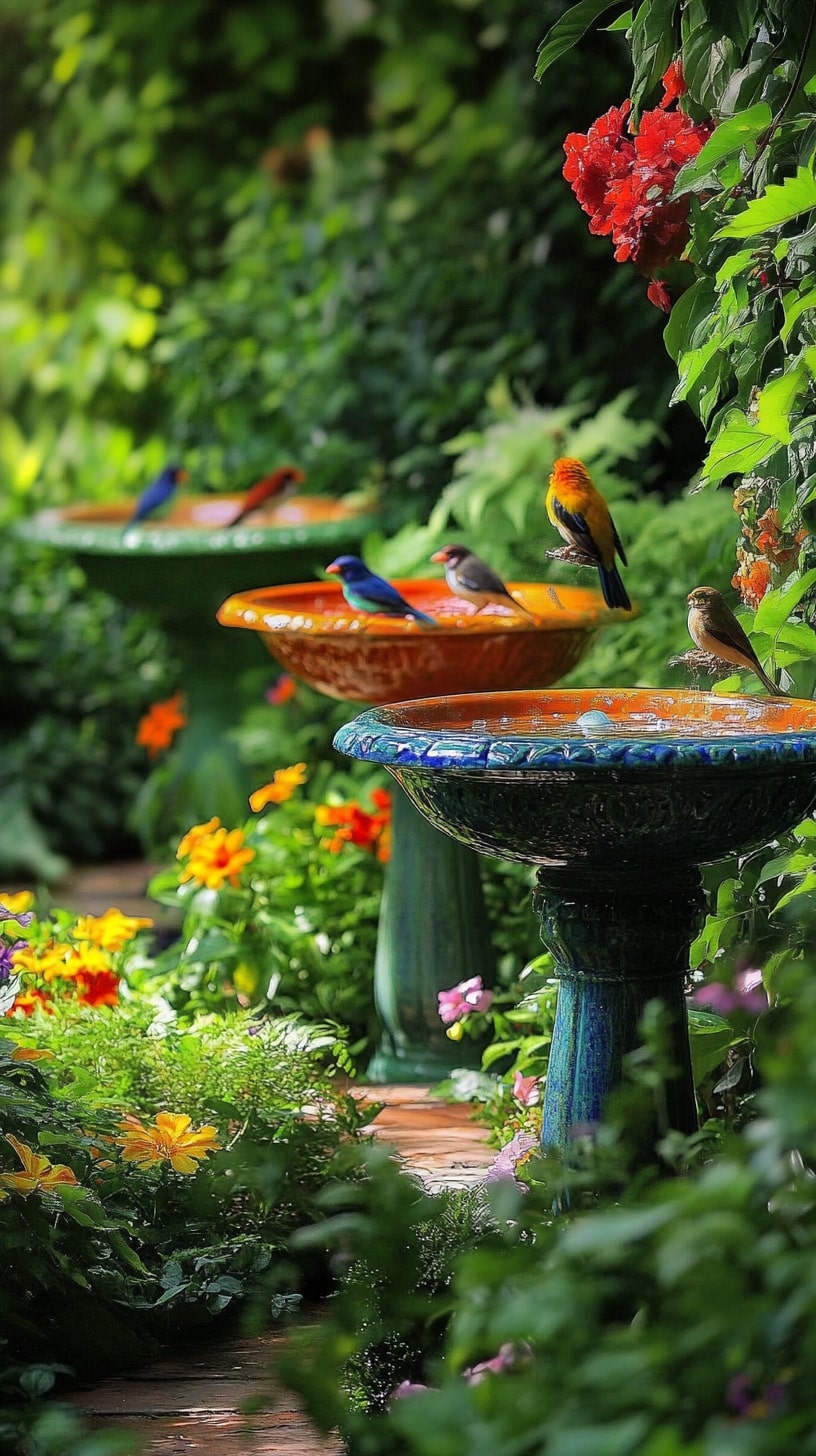
Bird baths do double duty—they look lovely and bring in feathered friends. Birds need a spot for drinking and bathing, and you get to enjoy their company.
Decorative bird baths add style, and tossing in a few rocks or branches helps birds perch safely. If you’re into DIY, there are tons of easy bird bath projects to try.
6) Incorporate Whimsical Wind Sculptures for movement
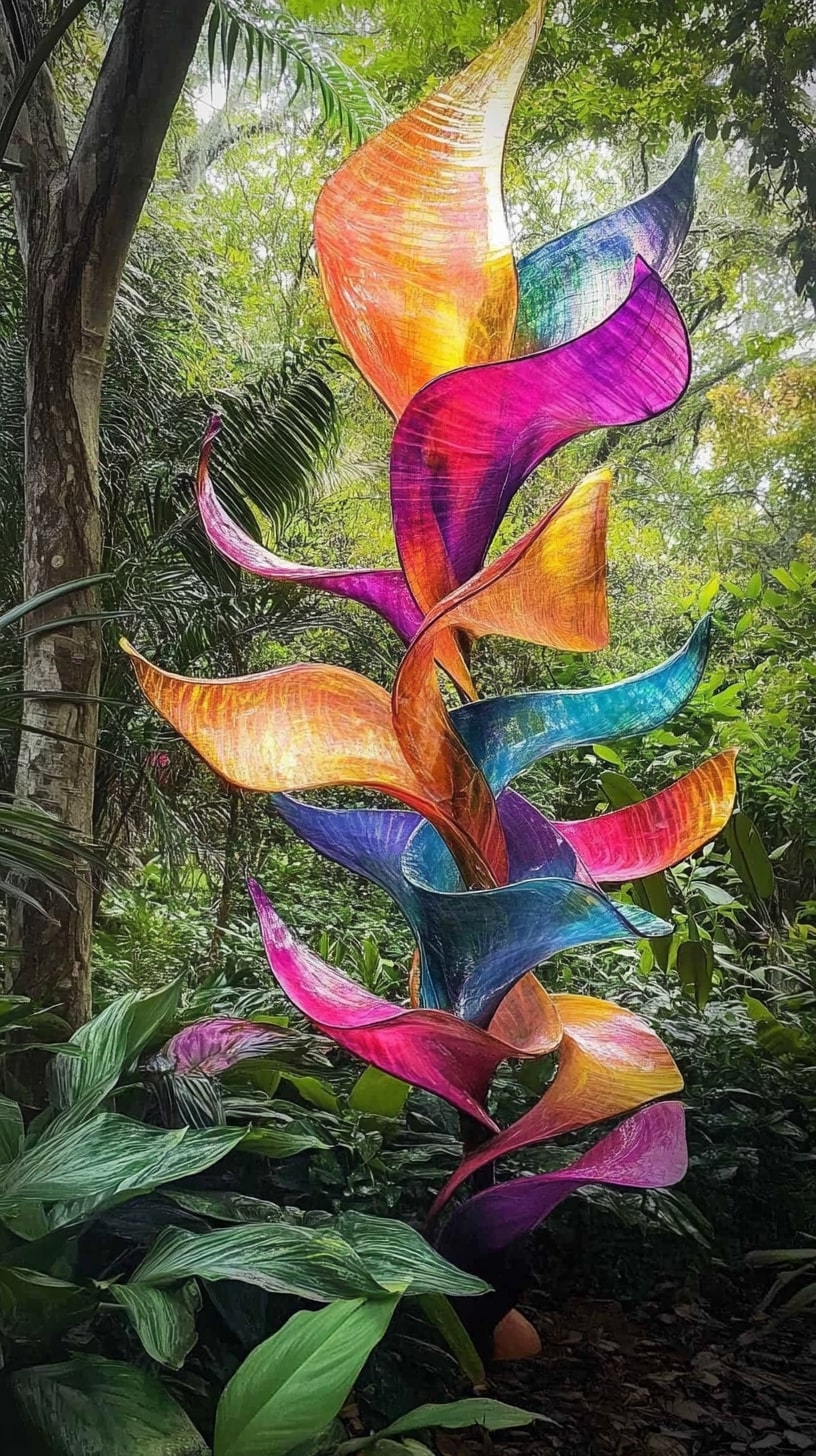
Wind sculptures add a bit of magic and movement, catching breezes in a way that’s oddly mesmerizing. They can be as subtle or as bold as you like.
A well-placed sculpture becomes a conversation starter or just quietly complements your plants. Look for designs with smooth bearings, they’ll spin even when the air is barely moving. Unique or handmade pieces, like those in whimsical wind sculpture collections, really make a difference.
7) Repurpose Vinyl Gutters as unique planters
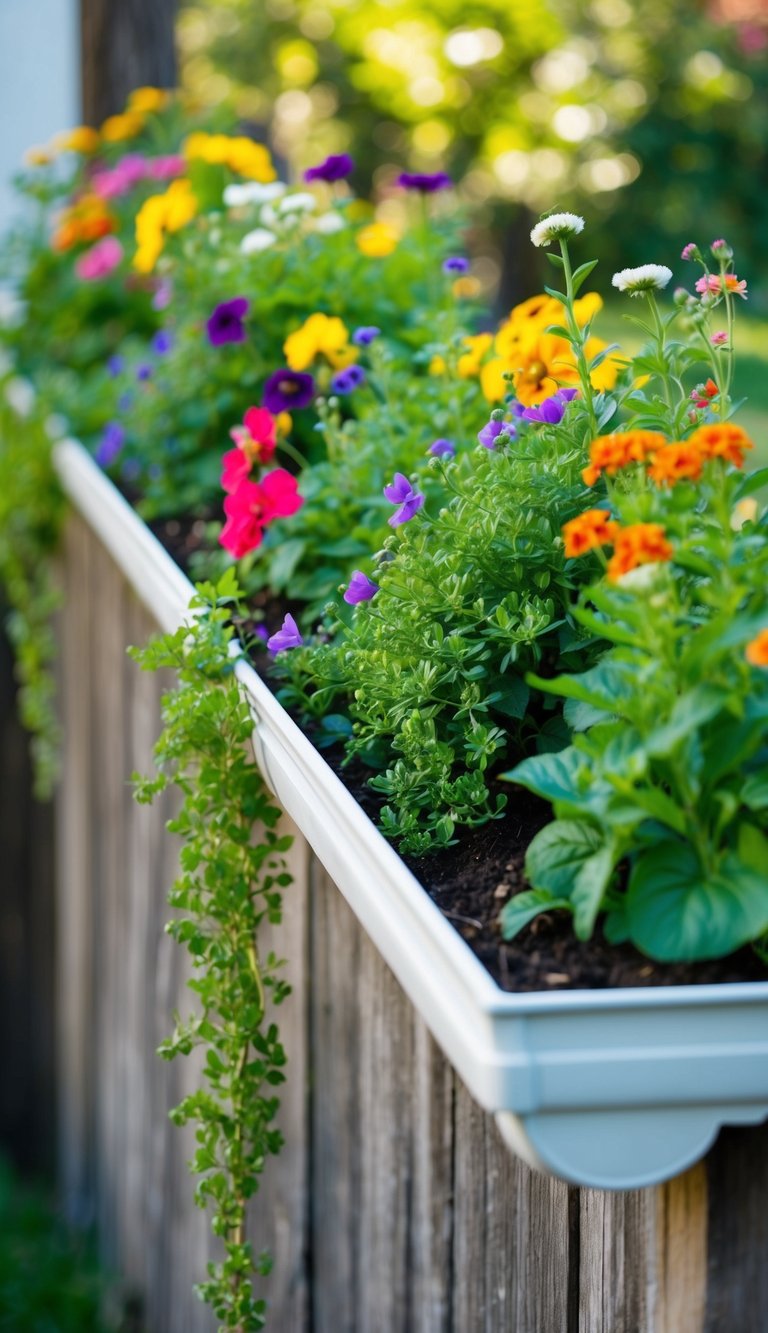
Vinyl gutters make surprisingly great planters for herbs or small flowers. Their long, narrow shape fits perfectly along fences or under windows.
They’re lightweight, durable, and easy to install. If you want a budget-friendly way to maximize space, this is it. There are more creative ways to repurpose rain gutters if you want to get creative.
8) Place Garden Statues or Sculptures for focal points
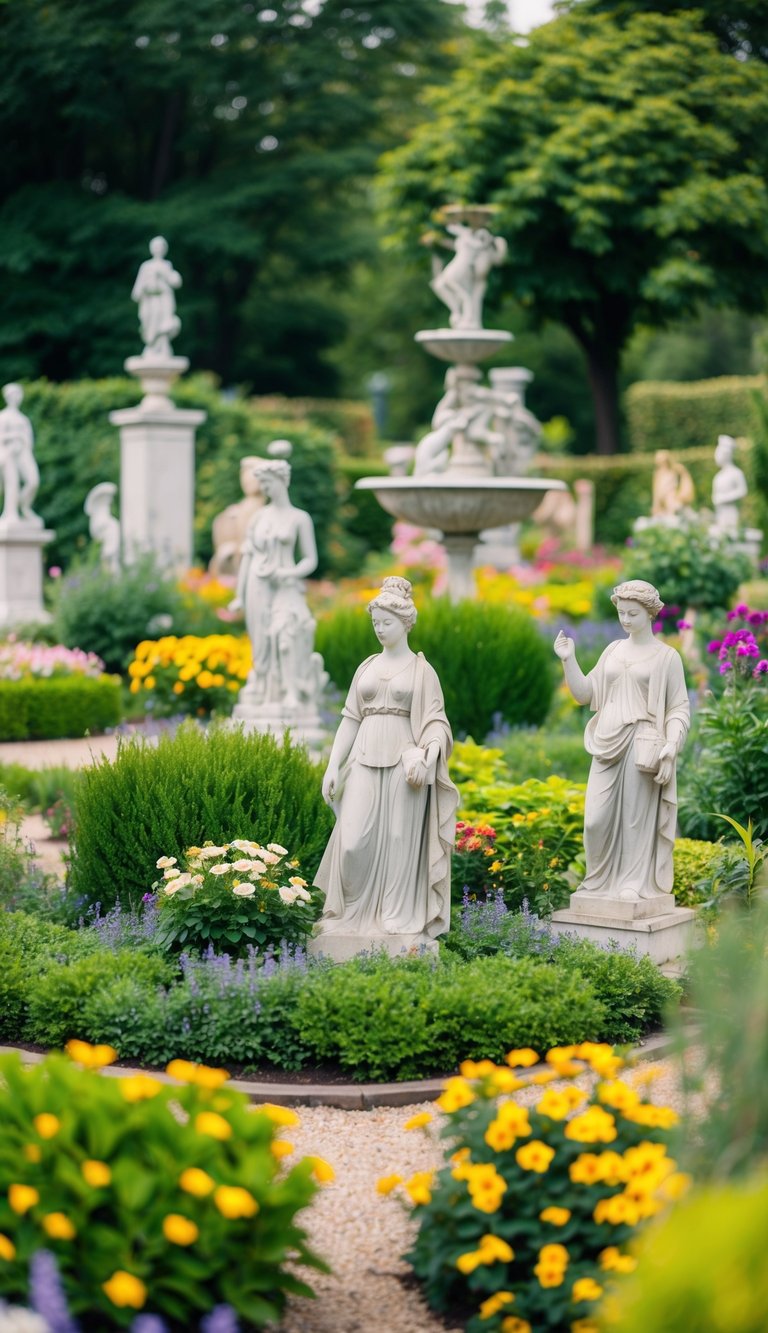
Statues and sculptures instantly draw the eye and help organize your garden visually. Place one at the end of a path or in a quiet corner for a little drama.
Simple shapes like obelisks or spheres work well, especially with a single flower color nearby. For more inspiration, browse garden focal points and sculptures.
9) Design Raised Beds to organize planting areas

Raised beds make it easy to keep things tidy and organized. They help with drainage and cut down on weeds, which is always a win.
You can customize the size and shape to fit your space or plant preferences. If you’re looking for ideas, check out creative raised garden bed designs that look as good as they work.
10) Use Colorful Planters to brighten garden spaces

Bright planters bring a pop of color and energy to any outdoor spot. They’re great for highlighting areas or just adding a bit of fun.
Mix and match sizes and colors for a playful effect. For more ideas, see 15 Awesome Ideas for Landscaping With Planters.
Fundamentals of Decorative Garden Design
A well-designed garden really comes down to two things: visual harmony and smart material choices. The way you balance your elements shapes the whole vibe, while your materials affect how long everything lasts and how it all feels together.
Principles of Aesthetic Balance
Aesthetic balance is about making your garden look put-together, not chaotic. It’s the art of distributing visual weight—sometimes with symmetry for a formal look, or asymmetry for a more relaxed, natural feel.
You can balance things using size, color, and texture. For example, put a big plant opposite a few smaller ones, or use contrasting colors to highlight a spot.
Repeating shapes or patterns helps tie everything together. Don’t be afraid to mix up heights—it keeps things from looking flat or boring.
Selecting Suitable Materials
Materials matter for both looks and practicality. Stone and metal last a long time and don’t need much fuss, while wood brings warmth but needs some TLC to avoid rot.
Go for plants that suit your climate and soil—they’ll be healthier and easier to care for. Mixing hardscape (like paths or walls) with softscape (plants, mulch) adds depth and texture.
Finish and color make a difference, too. Matte surfaces are subtle; shiny ones feel modern. Try to pick materials that play nicely together for a space that feels intentional and functions well. For more on this, check out the 10 Basic Elements of Garden Design.
Integrating Decorative Elements with Outdoor Spaces
Blending decorative features into your garden is about making sure they fit with what’s already there. It’s also good to have a plan for keeping things looking fresh year-round.
Creating Cohesion with Existing Landscape
Cohesion comes from matching materials and colors with your plants and hardscape. If you’ve got stone paths, maybe choose sculptures or planters in similar tones.
Try putting decor where it enhances a spot, not where it crowds things. Clustering smaller items can create a balanced look without feeling messy. Repeating shapes or colors helps everything feel connected.
Seasonal Maintenance Considerations
Decorative pieces left outside need a little care. Metal parts might need a touch-up to prevent rust, and wood should be sealed or stained to handle moisture.
Plants mixed with decor need regular pruning and sometimes a refresh between seasons. Water features and fragile ornaments should be prepped for winter. Having a seasonal maintenance plan helps your garden keep its charm. For more creative ideas, here’s a YouTube video on garden transformations.
Frequently Asked Questions
Designing an attractive, practical garden means picking the right materials, planning your space, and finding that balance between looks and low-maintenance care. Here are a few common questions folks have.
How can one achieve a beautiful garden design on a limited budget?
Go for affordable classics like terra-cotta pots—they’re charming and cheap. Repurpose old stuff, like turning a wheelbarrow into a planter, for extra character.
String lights are another low-cost way to boost evening ambiance. Focus on a few standout features instead of spreading your budget too thin.
What are effective layout strategies for optimizing small garden spaces?
Use vertical elements like trellises to add height without using up precious ground. Group containers to fit more plants in less space.
Define zones for different uses, like seating or pathways, to make a small area feel bigger and more organized.
Which low maintenance elements can enhance garden decor?
Bird baths bring in wildlife and don’t need much attention. Terra-cotta pots age gracefully and require little care.
Native or drought-resistant plants keep watering to a minimum. Hardscape like gravel paths or stone decorations look good with almost no upkeep.
What are some DIY ideas for garden decoration?
Build a simple trellis for climbing plants—it’s easier than it sounds. Upcycle an old wheelbarrow into a planter for a quirky touch.
Hang string lights or make a basic bird feeder for instant charm without much effort or expense.
What principles should be considered for creating a simple yet striking garden?
Stick to clean lines, a cohesive color palette, and just a handful of well-chosen ornaments. One or two bold features, like a trellis or bird bath, make a bigger impact than a bunch of small ones.
Balance hardscape and plants for a space that feels both organized and welcoming. Consistent materials help everything feel pulled together.
What techniques can maximize the visual appeal of a compact garden area?
Layering plants by height and texture adds a sense of depth. It’s a classic trick, but it works wonders.
Vertical elements—think trellises or even a tall planter—draw the eye upward. Suddenly, the whole space feels a bit bigger, almost like it’s stretching.
Soft, ambient lighting from string lights can make evenings out there feel magical. Plus, it highlights your favorite bits without much fuss.
Reflective surfaces like a bird bath or a shiny pot catch the light and add a little brightness. It’s a small detail, but it really does make things pop.

